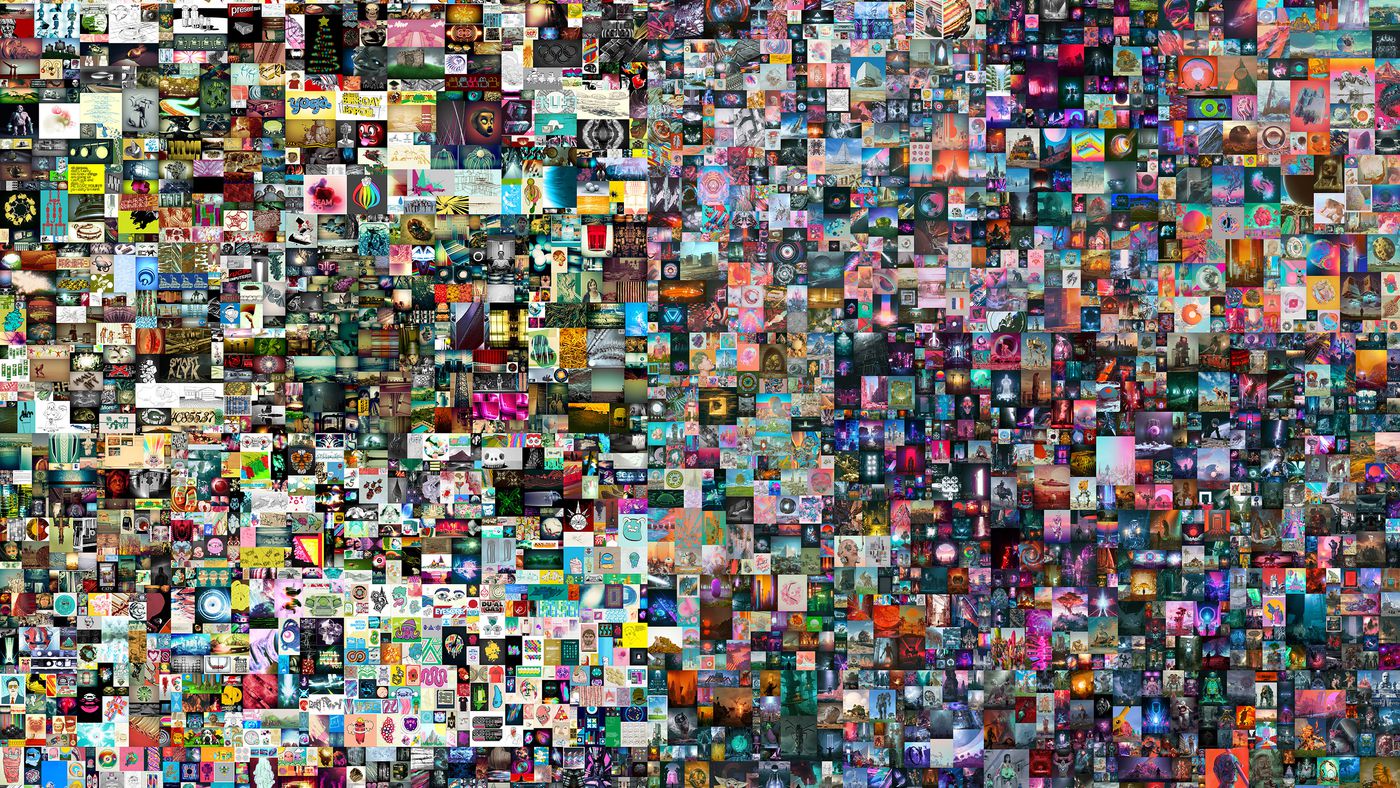|
Getting your Trinity Audio player ready...
|
Recently, a work of digital art was sold at an auction in Christie’s for $69 million! Yes, you heard that right…
Digital artist Mike Winkelmann has been creating one piece a day. The image file he sold is made up of 5,000 days of work, and called “Everydays – The First 5000 days.”
Let’s look at the world of digital art and how people buy and sell online.
A Unique Token
NFT’s, or non-fungible tokens, are unique signatures for non-physical objects, such as digital work. They are based on the concept of fungibility, which is to be “mutually interchangeable.” For example, a nine-carat diamond is fungible because it isn’t any different than another nine-carat diamond.
However, non-fungible assets are unique pieces, such as artwork, that are not interchangeable with other art pieces because each has its own distinctive identity. And this isn’t limited to digital artwork- internet domain names, such as Facebook or Instagram are non-fungible digital assets.
How do they work?
 Artists can upload and certify any digital asset- 3d animations, video clips, music, etc onto blockchains. Blockchains are a sequence of records shared among a network that is accessible to the average internet user. No member can change or delete any data stored in a blockchain without interrupting the sequence.
Artists can upload and certify any digital asset- 3d animations, video clips, music, etc onto blockchains. Blockchains are a sequence of records shared among a network that is accessible to the average internet user. No member can change or delete any data stored in a blockchain without interrupting the sequence.
Popular blockchains, such as the Ethereum blockchain, have provided platforms for creators to sell their digital work. To learn more about blockchains and bitcoins, read our earlier article HERE.
How popular are they?
Digital art is more lucrative than it seems. Winkelmann’s art piece sale was not an outlier. Popular YouTuber Logan Paul sold more than $5 million worth of digital Pokémon cards with his cartoon face to his followers.
Twitter boss Jack Dorsey’s first tweet has sold for $2.9 million dollars. An NFT self-portrait made by Sophia the Robot has sold for nearly $700,000 dollars. In 2017, CryptoKitties, a blockchain-like game where digital cats are bred and traded, generated over $1 million in virtual kitty sales.
Is this the future?
 Supporters of digital art have argued that it has the potential to change digital ownership on the Internet.
Supporters of digital art have argued that it has the potential to change digital ownership on the Internet.
Already, it is very beneficial for artists to sell their work as NFTs, because it allows them to operate independently of art galleries and auction houses in order to sell their work. They can also earn royalties from future sales. In Winklemann’s case, he will receive a 10% royalty from each re-sale of his art piece!
On the other hand, some have argued that the high prices for NFT’s are driven in part by the novelty, and will not continue long-term. It is already difficult to buy NFTs, because most marketplaces require potential buyers to pay in cryptocurrency.
Cryptocurrency can be suspect. For example, Ethereum, the cryptocurrency most NFTs are purchased with has fluctuated wildly in value this year. The whole thing isn’t very environmentally friendly, either. A single transaction on Ethereum uses more power than an average US household does in a day.
Ethereum developers do have plans to make their platforms less wasteful. However, the energy inefficiency and the novelty driving up prices of NFTs have led some to question if blockchains like Ethereum are sustainable long-term.
But there is no denying that new technologies such as virtual buying and selling will keep on changing how the Internet is used!
Sources: Vox, Verge, NY Times, BBC



